Years ago, during the last few months preceding the start of my Tour of Gondwana, I killed some time and distracted myself through that often-anxious period, by plotting a potential route, and investigating possible destinations, for another cycling Grand Tour. A special kind of sickness is required for a person to begin imagining a second multi-year tour before their first has even started, and there is no way I can deny that I exhibited all of the symptoms of that particular affliction. Specifically, the tour I envisioned at the time would have been one that took place on all of the lands that were part of the great Mongol Empire, at its maximum extent during the thirteenth century. In the image below, the green area of the mosaic generally represents the area covered by the Empire, which was initiated by Chinggis Khan and expanded further by his sons. As the map reveals, the Empire contained quite a large number of places that today would be interesting and enjoyable to visit during a lengthy tour, and one could also do so without the inconveniences often imparted by those pesky geographic features known as oceans. Because I had long been fascinated by the history and culture of the Mongols, I then had the seed planted in my mind that I would try to do that tour, at some point in the future, after I had completed Gondwana.
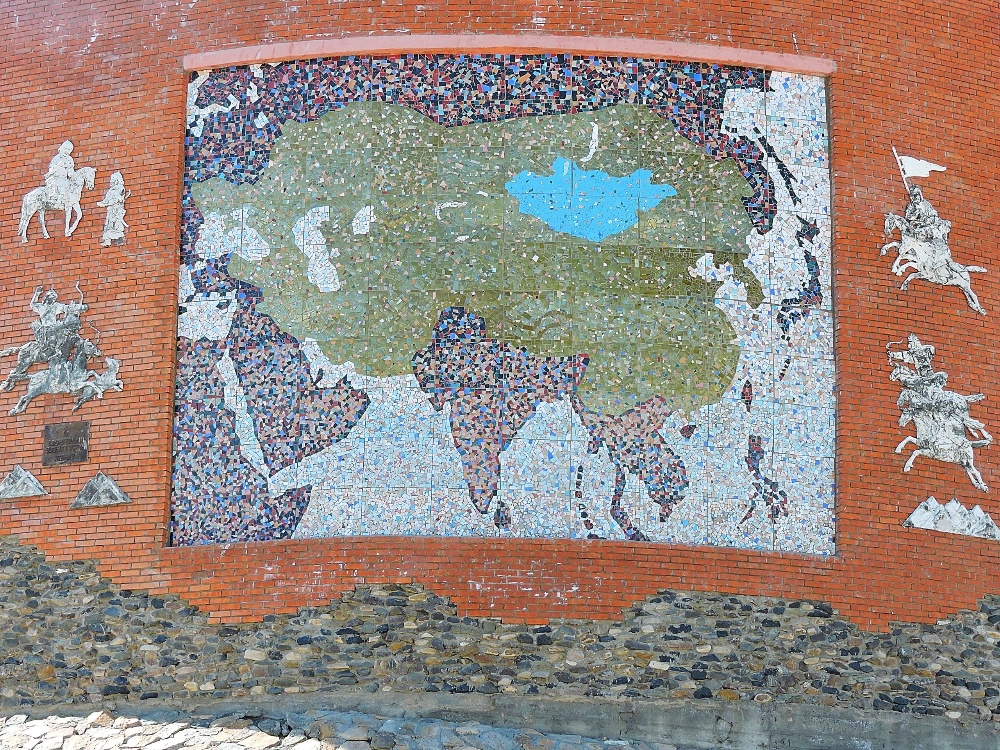
Of course, at the end of that first long, challenging Tour I was somewhat worn-out physically, had no resources available, and, most importantly, had other commitments that would not permit another long tour any time soon. However, even with all that I had just been through, I still felt just a bit sad that the Mongol Empire Tour seemed like it would probably never happen. But things sometimes have a way of turning in unexpected directions, and, several years later, the possibility of a second Grand Tour began to seem like it could be somewhat less than impossible. By that time, I had also accumulated a significant list of other, widely scattered, locations that I very much wanted to see during a tour. When linking those together into what would become the route for the World2 Tour, I knew that I could not ignore at least some of lands that would have comprised my Tour That Wasn't. Including the entire Empire would be completely impractical, but when I had eventually finalized the route for this Tour, about half of the lands of the Empire were at least partially covered. Paramount among those destinations was modern Mongolia itself, which was right near the top of my list of most anticipated places for this Tour.
Then 2020 happened. I shouldn’t need to elaborate again on just how disruptive the globe closing down completely can be to a Tour intended to span four continents. The relevant detail is that Mongolia closed up perhaps more tightly than any other country, and its neighbors were not far behind. I held out hopes for a while, but it eventually became apparent that, for the second time, I would have to shelve any ideas I had of touring Mongolia.
Much later, right around the time I was choosing to end the Tour in New Caledonia, I was taken by surprise to learn that Mongolia had recently reopened completely for vaccinated travelers. Since reaching the Ultimate Destination was only going to be possible by flying from a Western European city, a requirement that would force me to cross the entire Eurasian land mass again, from east to west this time, I couldn’t pass up one final opportunity to make a brief stop in Mongolia along the way. It was not going to be ideal, nor simple, but at least I would get to see a few of the places I had thought about for so long. At the start the process was quite draining, as the available flight options to get from my first Coda stop, on Borneo, to Mongolia were significantly crappy, forcing me to make two overnight layovers in Singapore and Seoul. I will give due credit to the Incheon Airport in Korea, however. When passengers need to transit through an international airport that involves a change of airlines, most countries require them to go through immigration, which may require a visa—an annoyance in ordinary times, but potentially impossible in the covid era—just to collect their checked bags, in order to re-check-in at the second airline. Incheon is the only place I have ever seen that allows passengers to remain in the Airside part of the terminal, while someone else transferred the bags between airlines. I had to go through this process twice, and both times was far from confident that it would work, especially for the bike, but each time I was relieved that it went smoothly, more or less. I was also somewhat surprised that landing at Ulaanbaatar was by far the easiest border crossing I had made in the previous two years. No proof of vaccination, PCR result, insurance, pre-paid accommodation, were asked for, no self-isolation, just: Show your passport—Stamp!—Welcome to Mongolia. It all seemed so Back to Normal.
The gigantic caveat, however, was that, while my original Tour plan would have involved a lengthy route through a large portion of the country, over fairly gentle terrain, with many pleasant nights spent camping on the Steppes, and, most importantly, enjoying the ideally suitable climate of mid-summer, in this case I would only be in the country for the final two weeks of March. Any descriptions of the harsh and lengthy nature of winters on the Central Asian High Plateau are certainly not exaggerations. Indeed, only on the final two days of my time there did the temperature rise above 0C, with the overnight low in one instance dropping to a frigid -25C. That circumstance effectively eliminated any realistic possibility of doing any cycling while I was there. I did intend to reassemble the bike at some point, in order to do one or two short rides in the cold, just so I could add Mongolia to my list of cycling countries, but, in the end, I couldn’t drum up enough enthusiasm for even that. Consequently, the two primary visits I intended to make while I was there would then require me to book private tours with local guiding companies. However, both of those trips, one to the center of the country and one to its northeastern part, were made to visit World Heritage Sites, and so they will get their own post in that section. Even though I really wanted to do a tour in Mongolia, this visit really wasn’t one, and, therefore, this post won’t really be a Tour report, but more like a photo essay.
Under those circumstances, I was destined to spend a considerable fraction of the time in the capital city, Ulaanbaatar, or UB for short. The country is over twice the size of Texas, but with a population of not quite three and a half million citizens, around half of which lives in UB. The city underwent a rapid expansion in the 1990s, after the fall of Communism, which mainly involved throwing up a great number of glassy high-rise buildings, seemingly at random, with, unsurprisingly, a concurrent increase in traffic congestion, now an essentially constant nuisance. While the city certainly won’t win any awards for sustainable architecture, or general urban planning, I actually surprised myself by mostly liking it, probably because it was friendly and there were always a lot of people walking about, even on the coldest days.
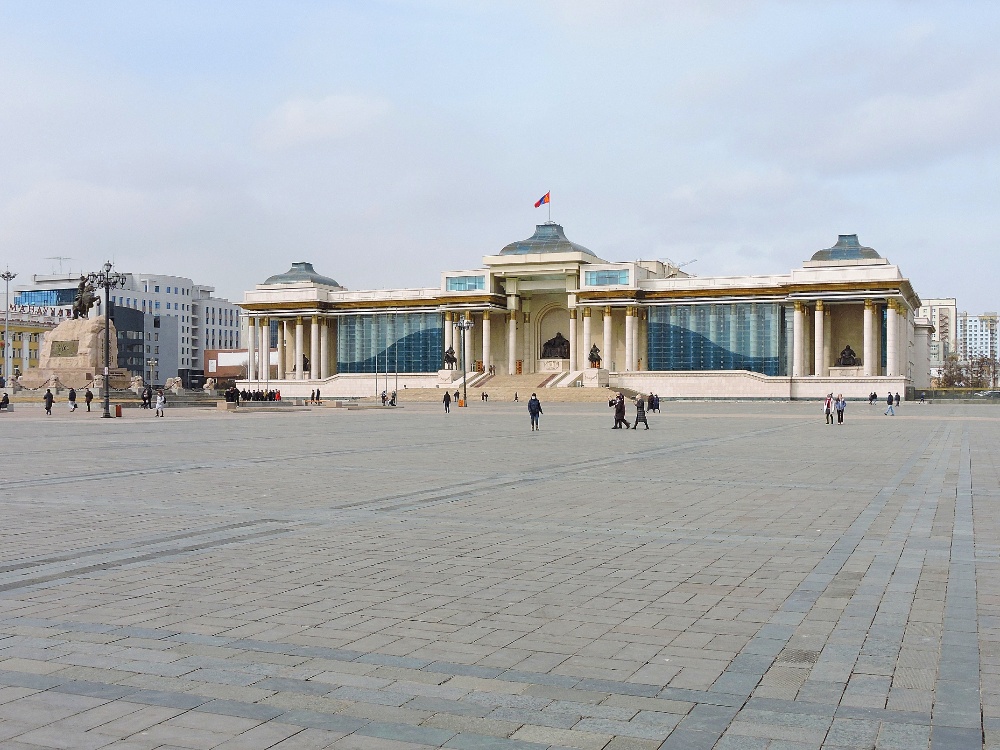
Having been sandwiched between the USSR and Maoist China for most of the twentieth century, when the Socialist government fell in 1990 Mongolia seemed to allow itself to be influenced from other directions. As far as I could tell, those influences came primarily from the USA and South Korea. The most useful aspect of that was a surprising amount of English being spoken throughout the city. Additional impacts from outside were more typical, the presence of a few American fast-food chains, and numerous Korean restaurants and convenience stores. There were a few other connections to the wider World, however. I was staying just around the corner from the National Theater, and I could actually have gone to see their production of Oklahoma!, if I had the inclination. I think the guy playing Curly would have probably stole the show.
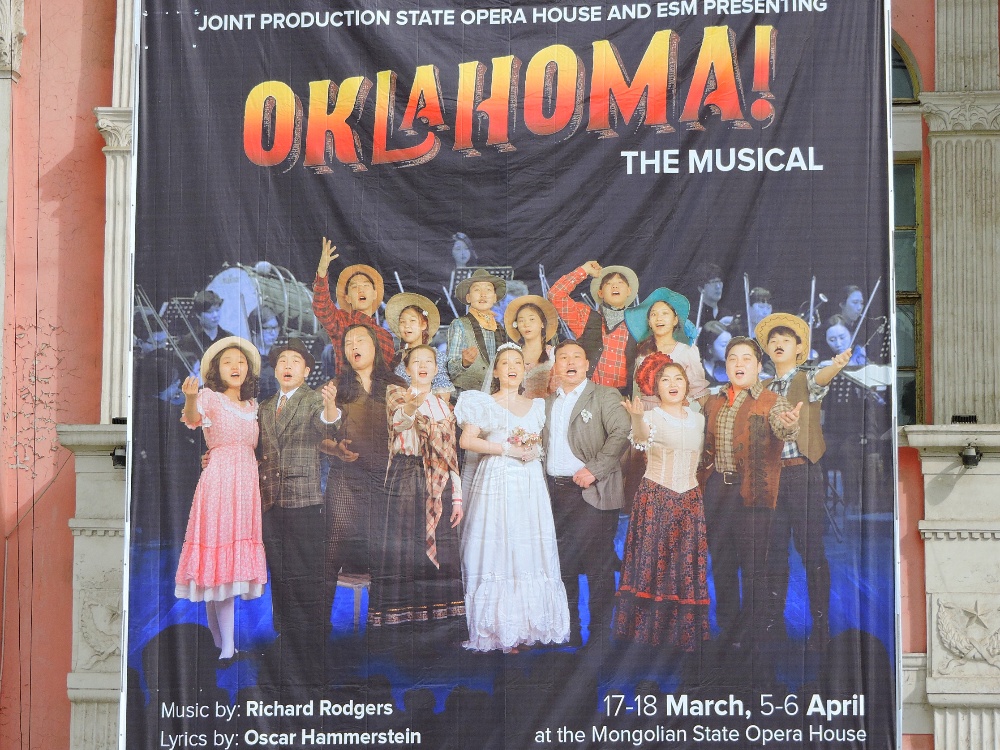
UB has a few interesting sights of its own, mixed in with its cement urbanity. I saw their fine national museum and the Gandan Monastery, one of the oldest in the country, which earlier had been spared from destruction at the hands of the Communists, and which contains several Buddhist Temples of various styles made by different sects.
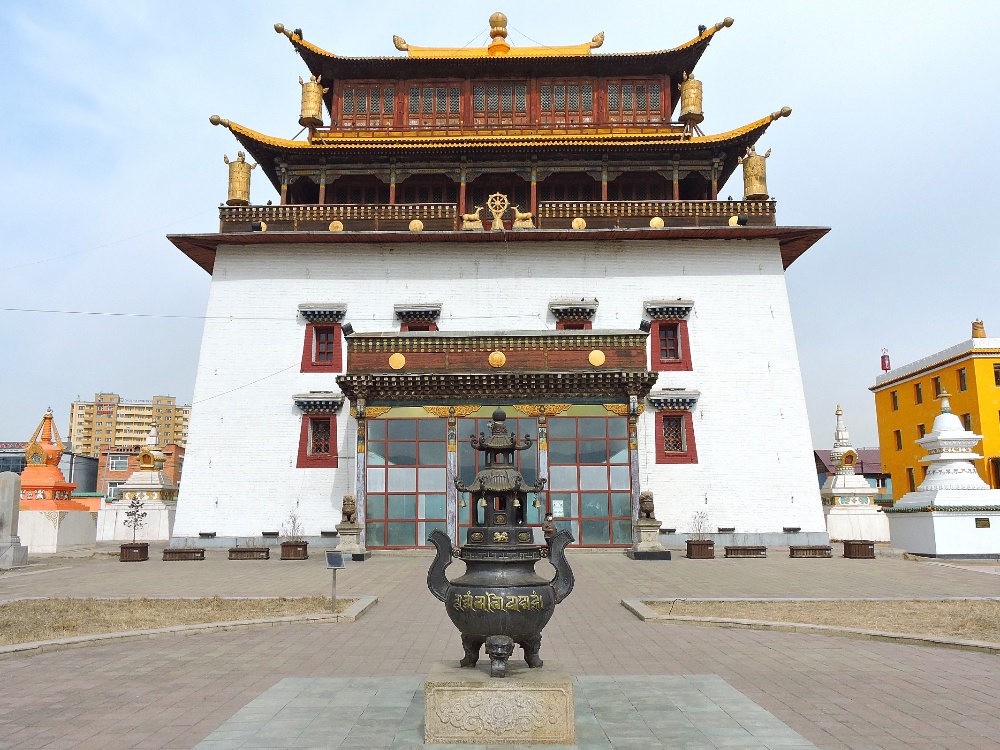
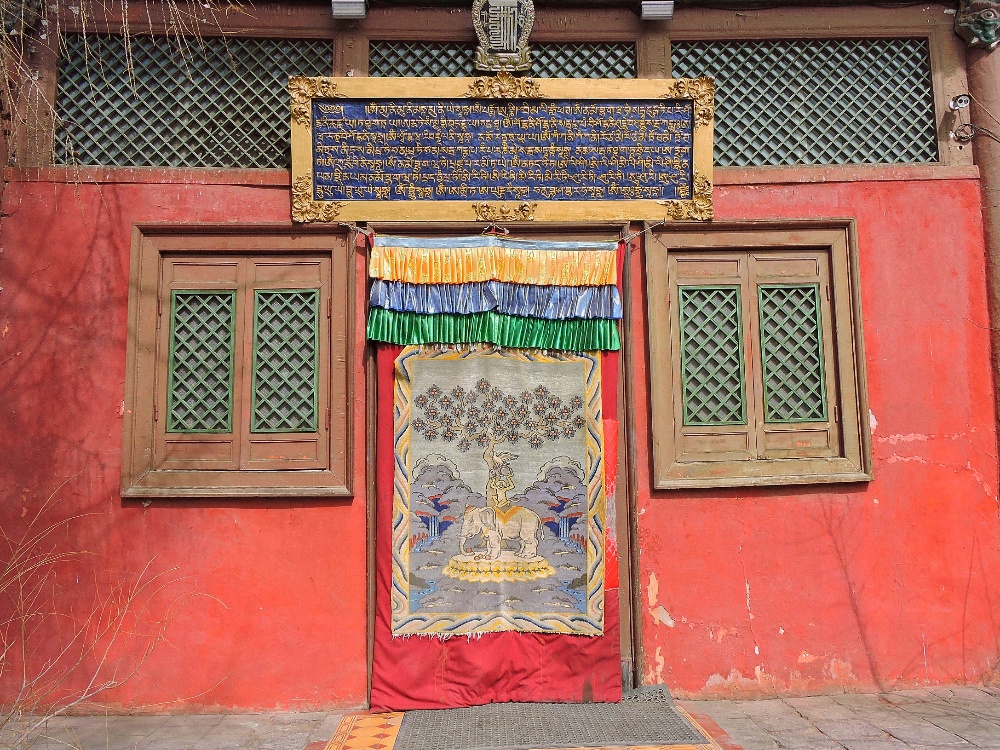
Four Friendsbanner
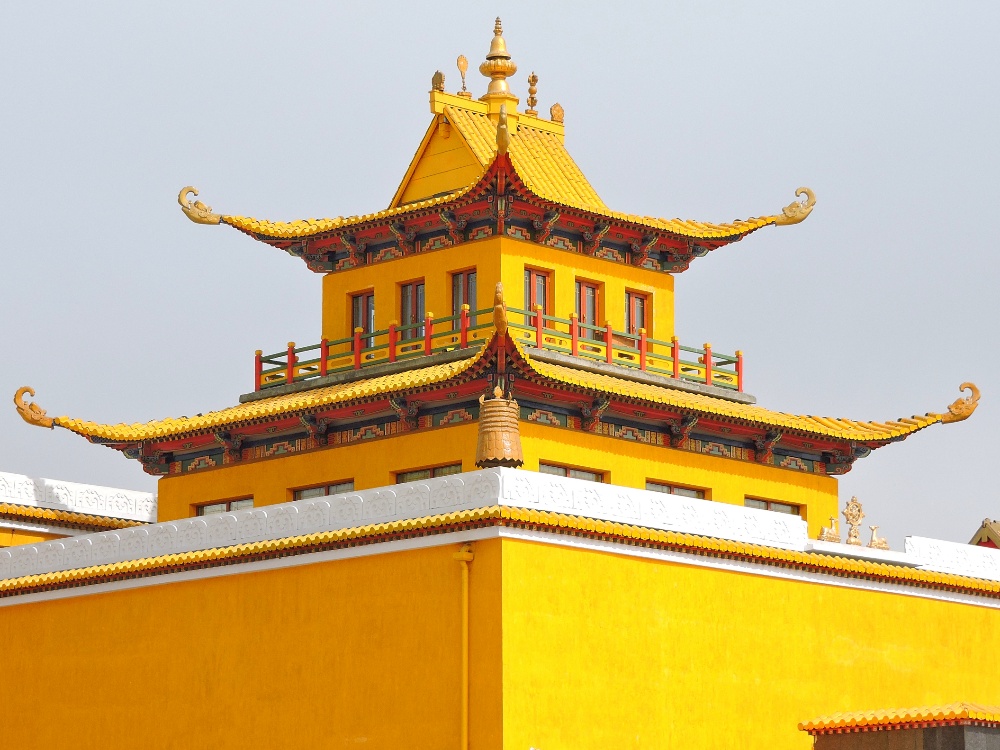
On the way to the center of the country, the starting conditions were rather bleak, with gray skies, wind, and snow flurries. Fortunately, blue skies soon returned, revealing classic Central Asian scenery, including one small section of dunes, similar to what would be found further south in the Gobi Desert.
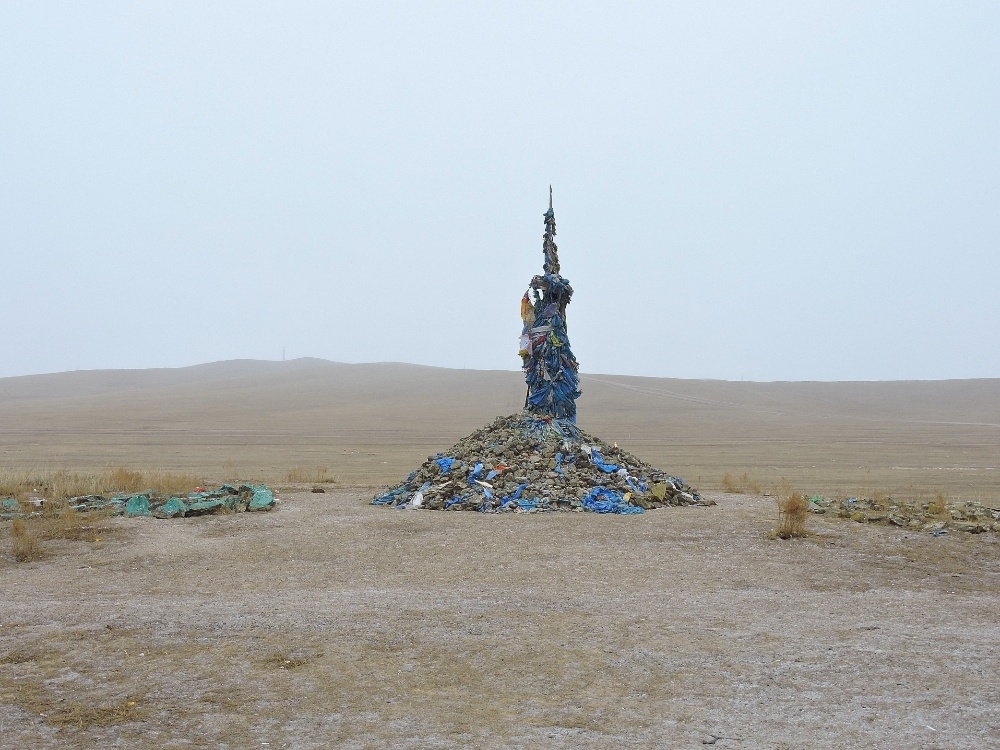
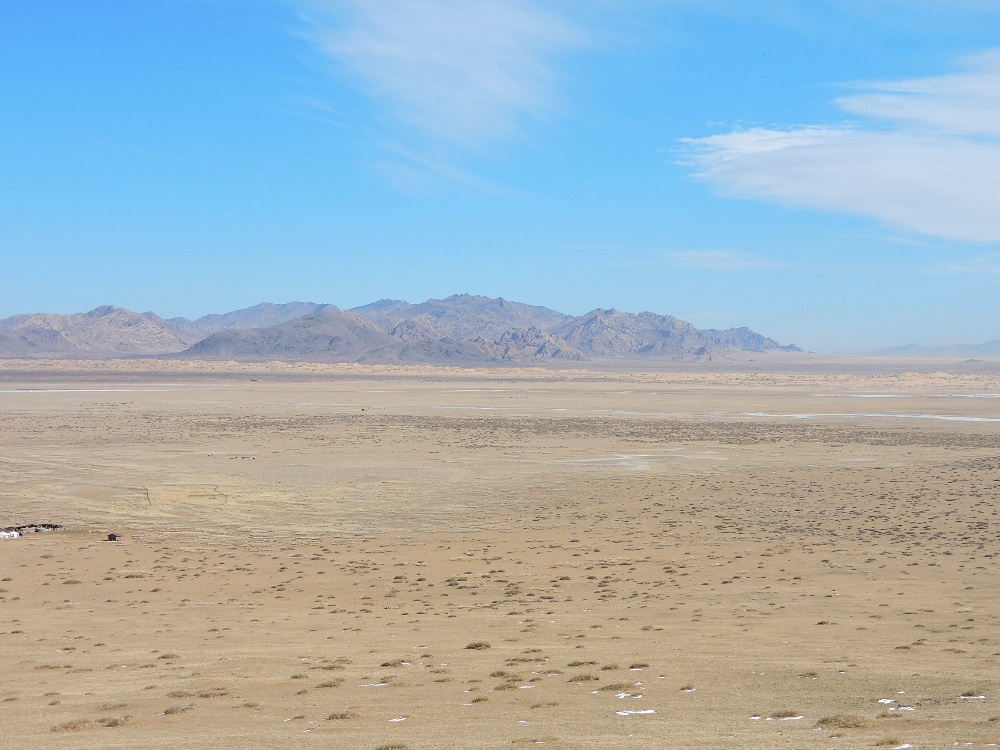
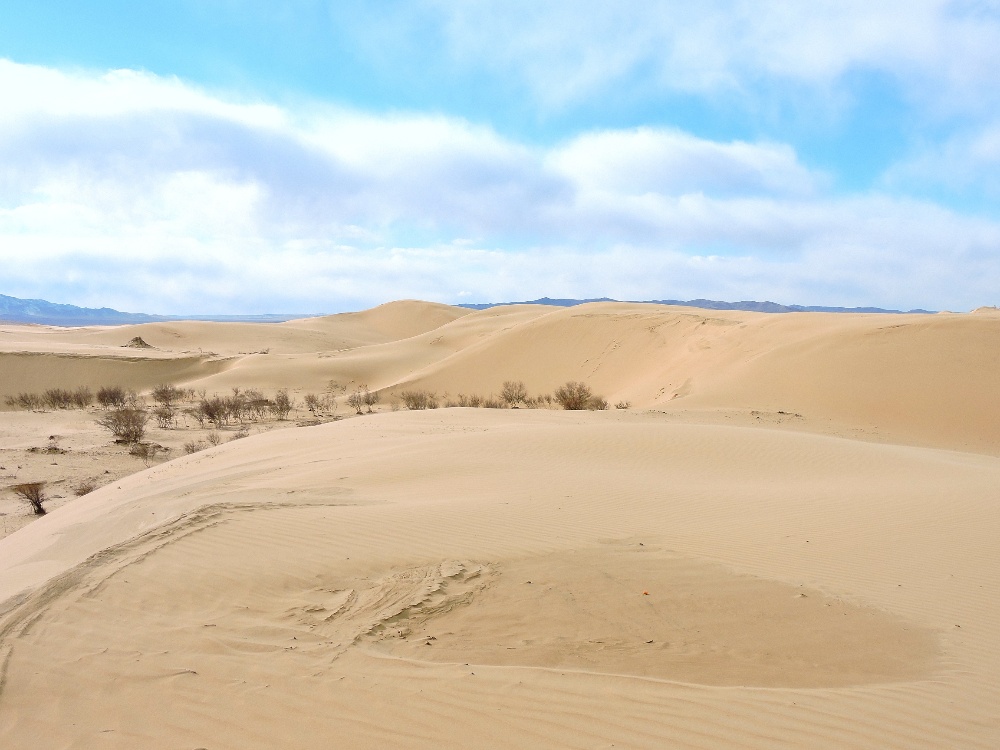
While UB is a cement jungle, in the countryside it is common to see families still living in the traditional Ger, the portable homes used by Mongol nomads for millenia. In fact, when I was not in UB, I spent each night in a comfortable Ger somewhere.
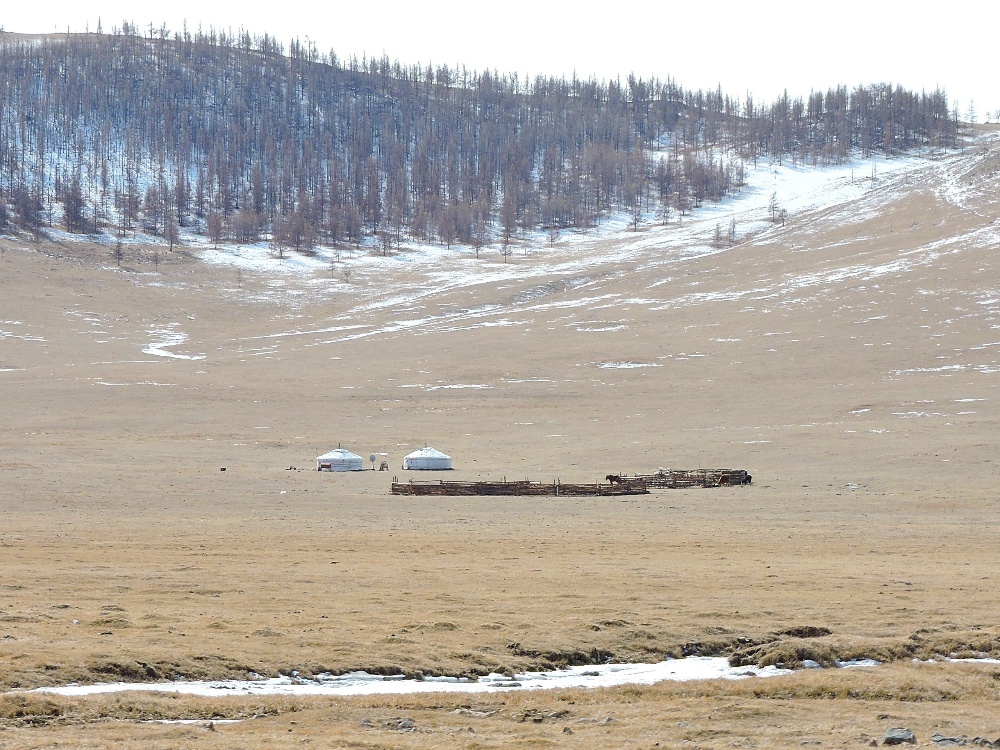
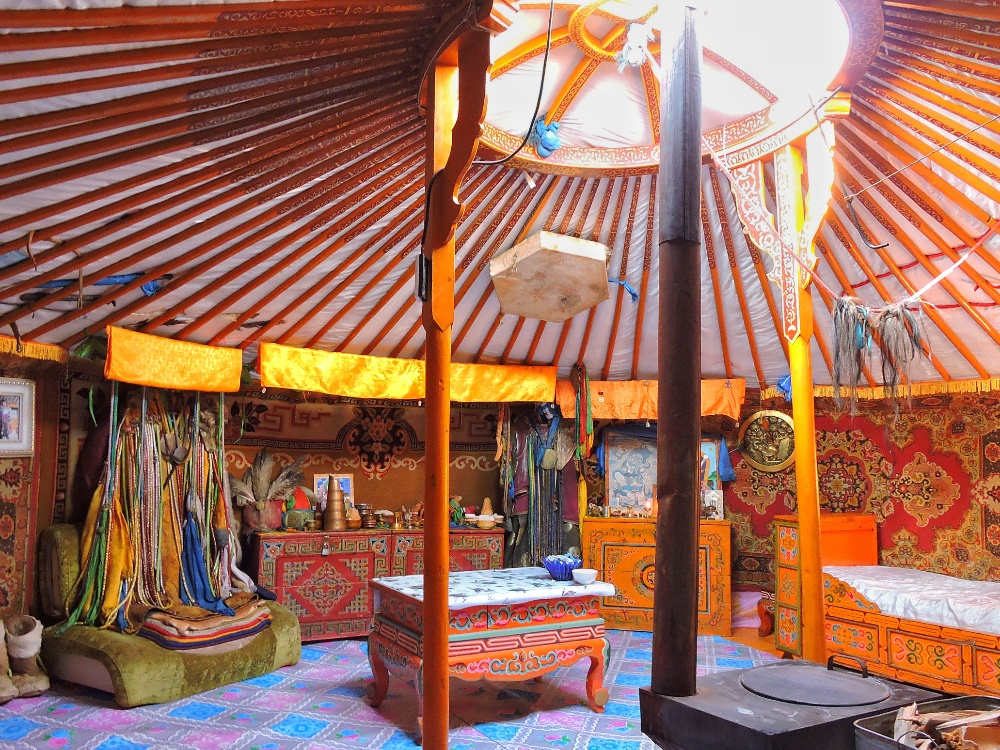
One of the things that I appreciated the most was the almost total absence of fences from the Mongolian landscape. I really don’t like fences. In a country that has always depended on animal husbandry, that meant that large herds and flocks of various herbivores were mostly free to wander about, minding their own business, the way it should always be. Some were common livestock, Cows and Sheep, as well as Cashmere Goats, but also some Yaks in the hillier areas, while on one occasion there was a group of semi-domesticated Bactrian Camels, and on another an excellent sighting of wild Mongolian Gazelle.
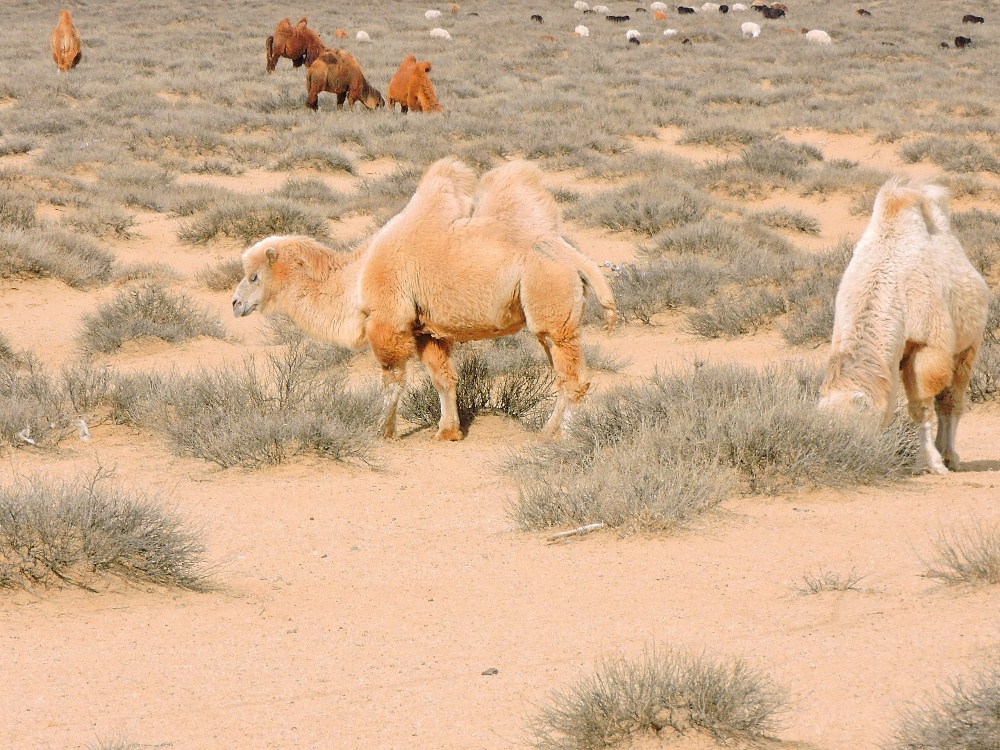
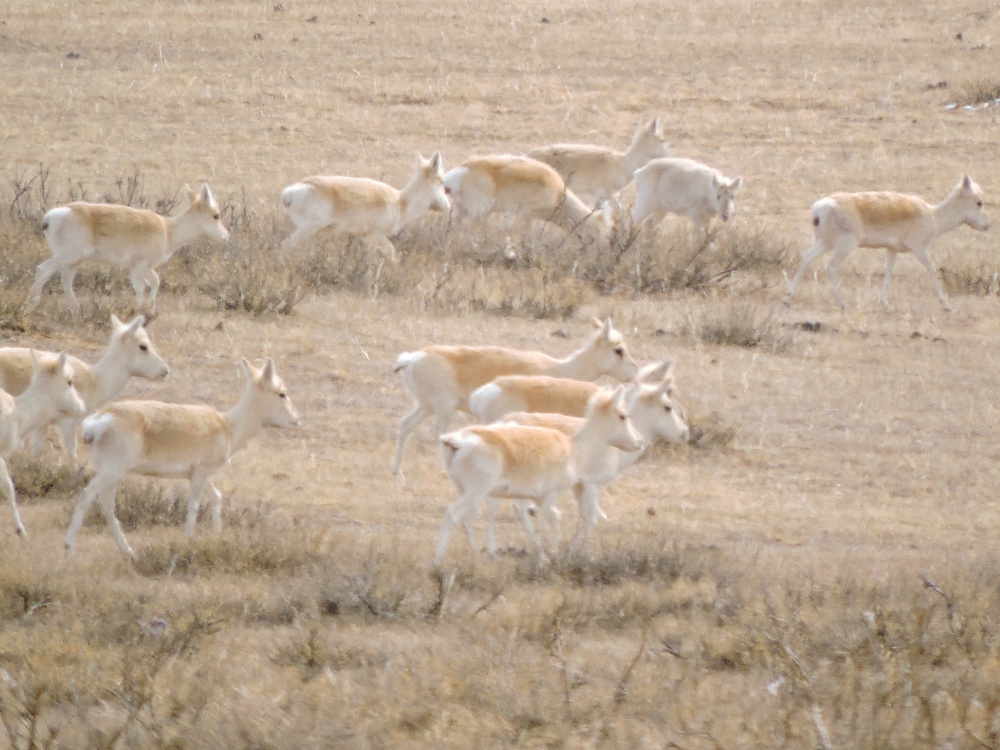
Of course, it is Horses that have always been inextricably linked to the Mongols, and today they are still seen filling the empty spaces of the steppes. The variety found today are mainly domesticated individuals with some genetic contributions from the wild, but very rare Przewalski's Horse. They are noticeably smaller than the common breeds of Horses, and I would actually feel uneasy about trying to ride one, given my above average body size.
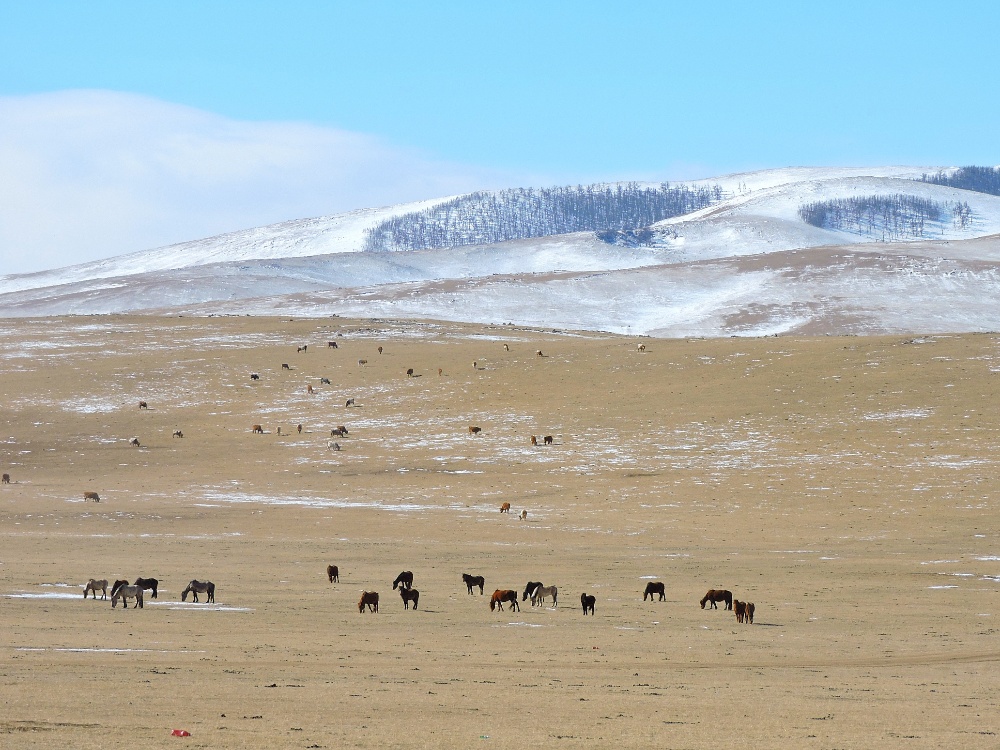
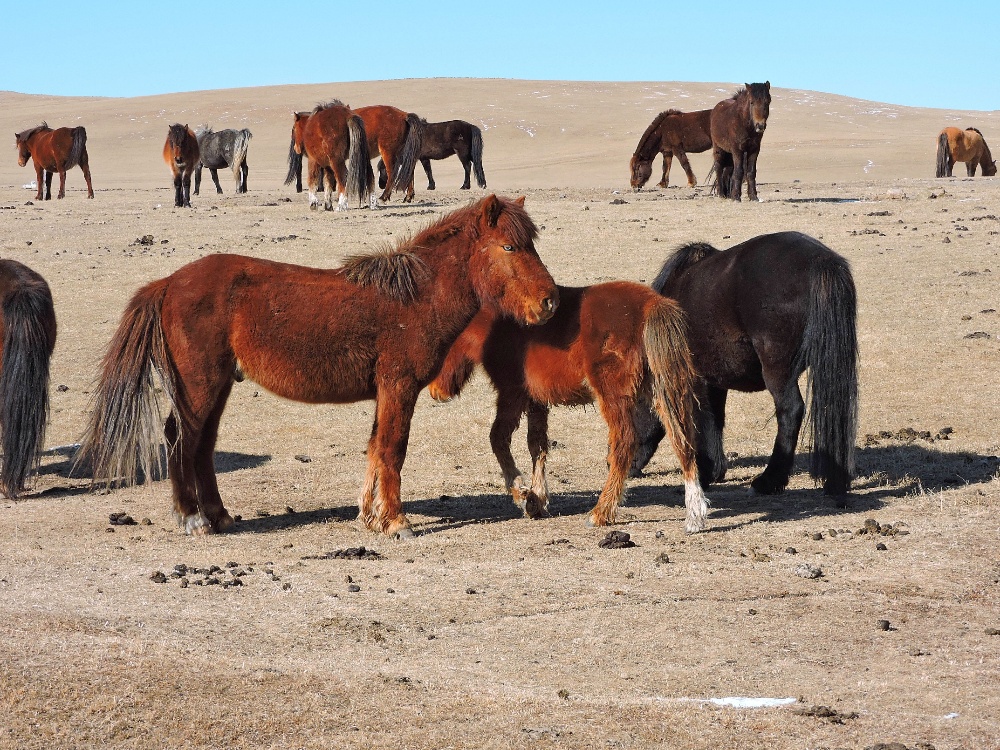
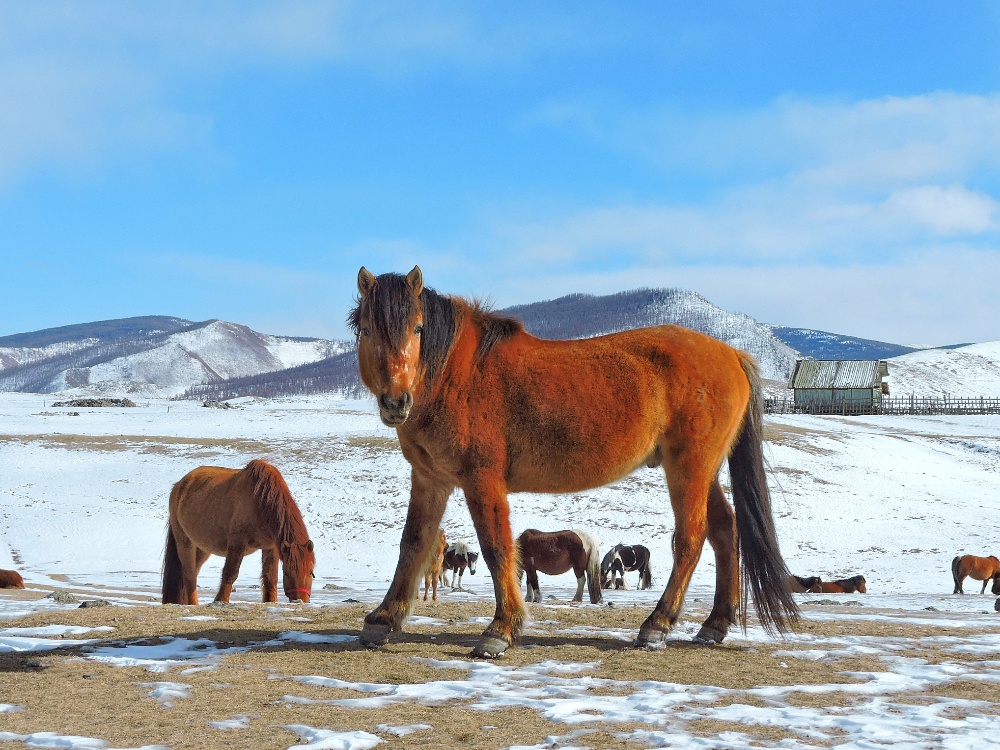
One historical figure whose image is also bound to Horses was, of course, Chinggis Kahn, himself. And nowhere is that more visible than to the east of UB, where a forty-meter-tall statue of the Kahn, said to be the World’s largest equestrian statue, was built several years ago.
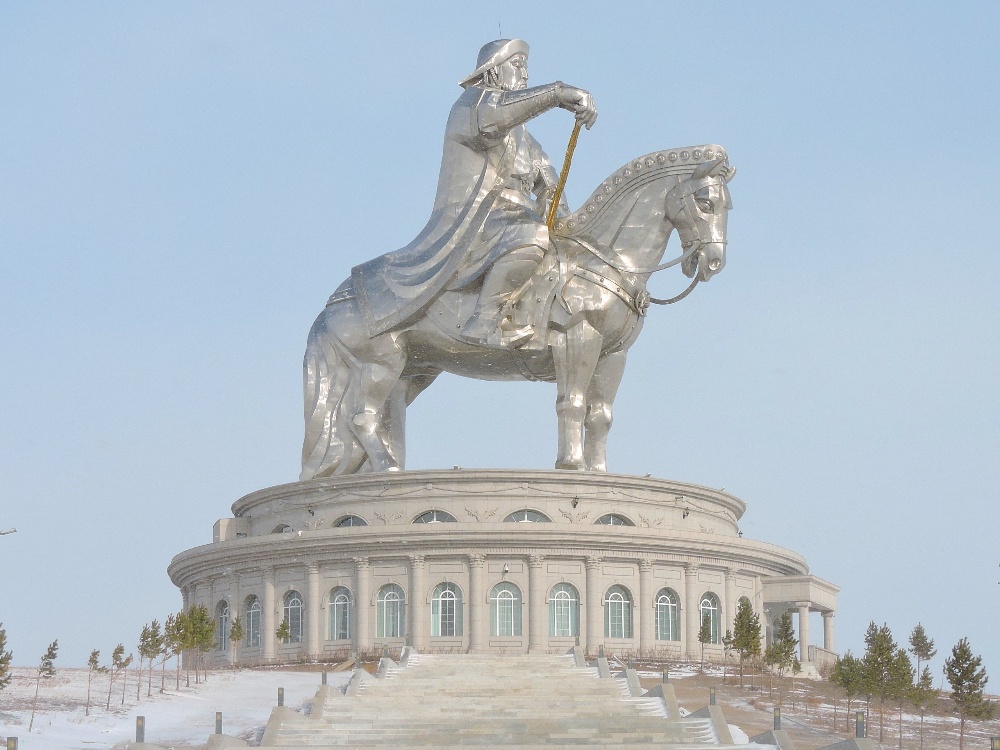
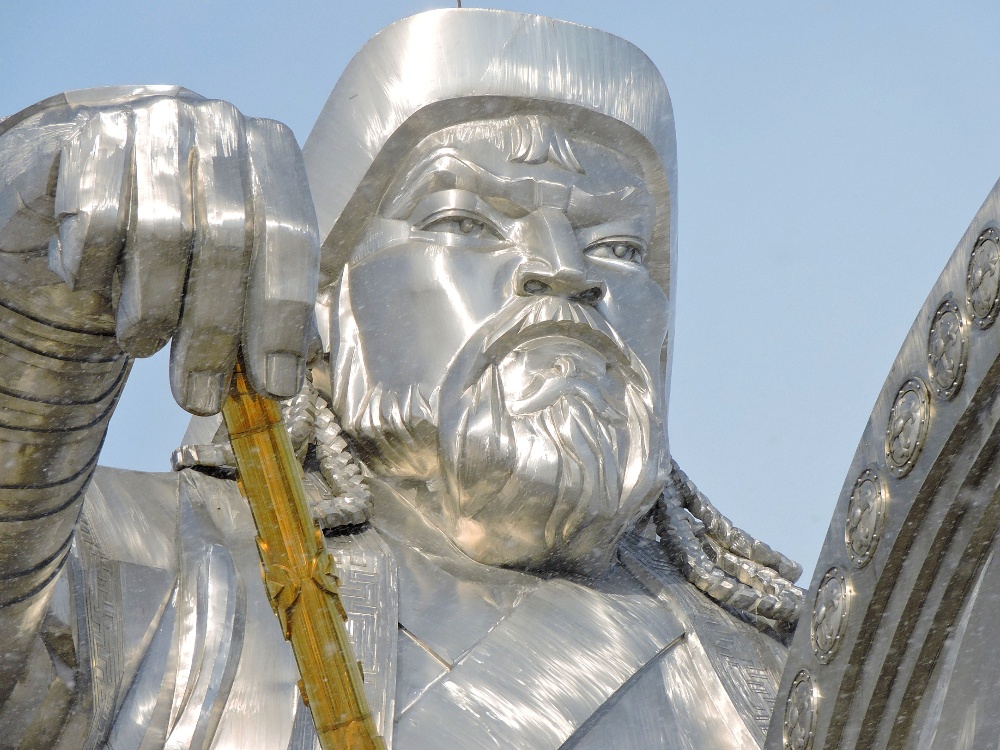
When traveling east, on the second of my two package tours, the cultural sights became a little more subtle than that, though still closely related to Chinggis, while the landscapes gradually turned more mountainous, slightly more forested, and colder.
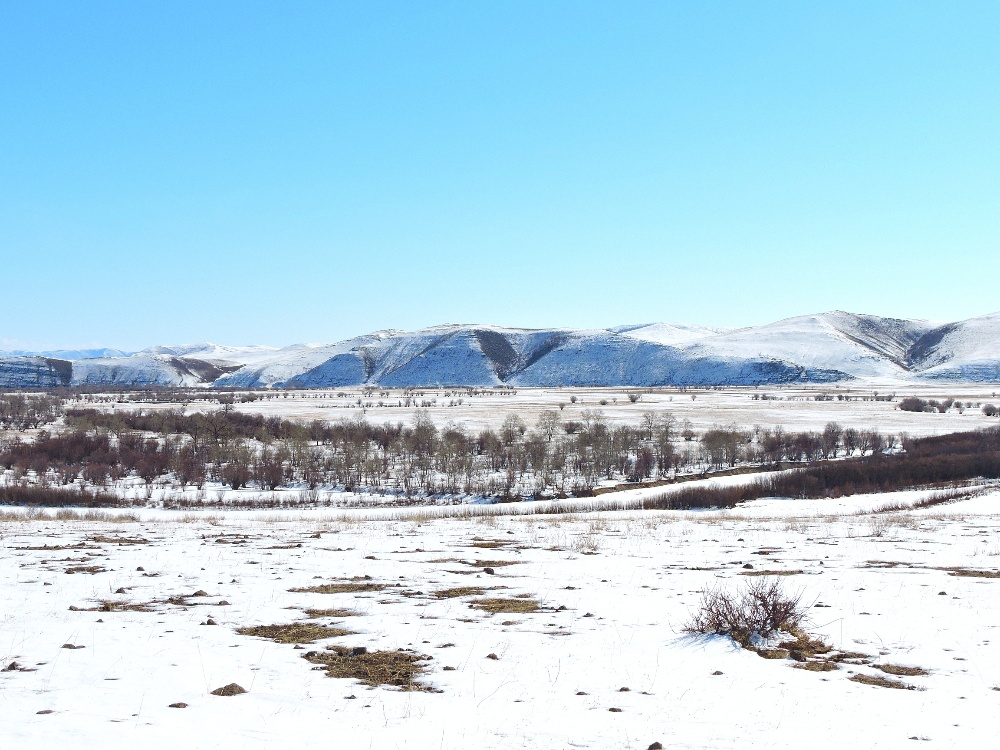
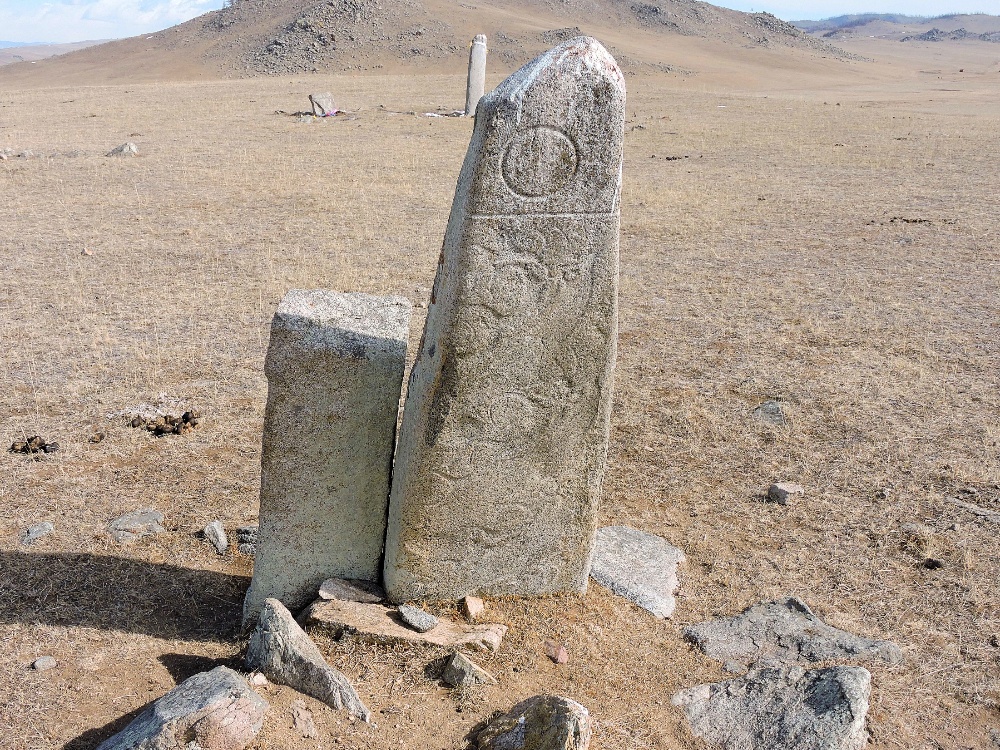
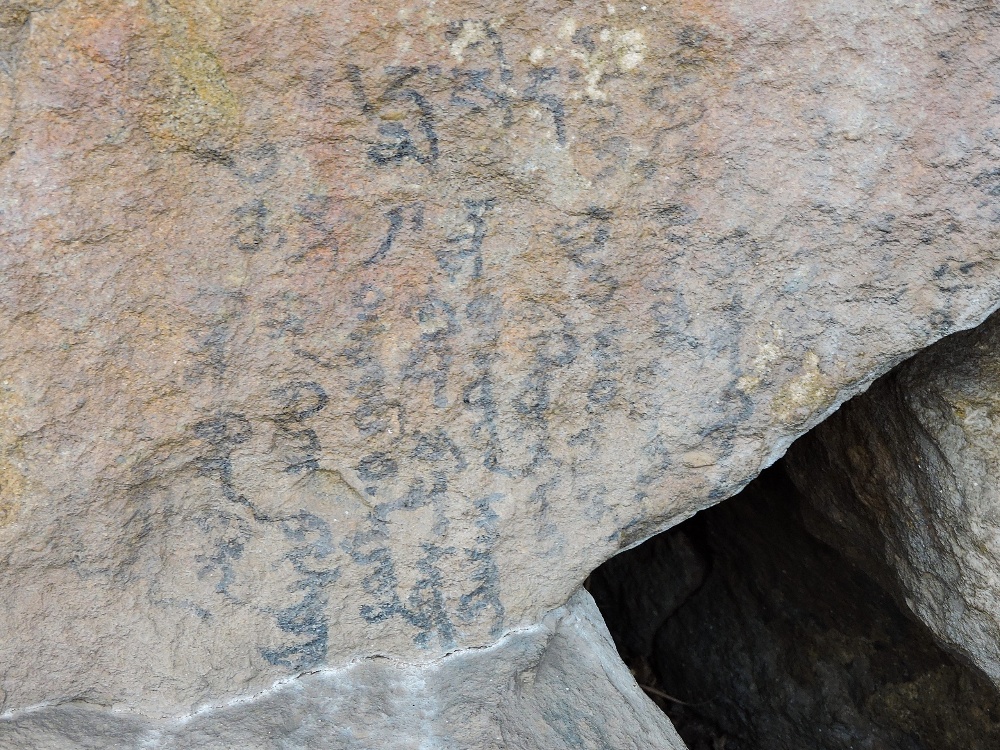
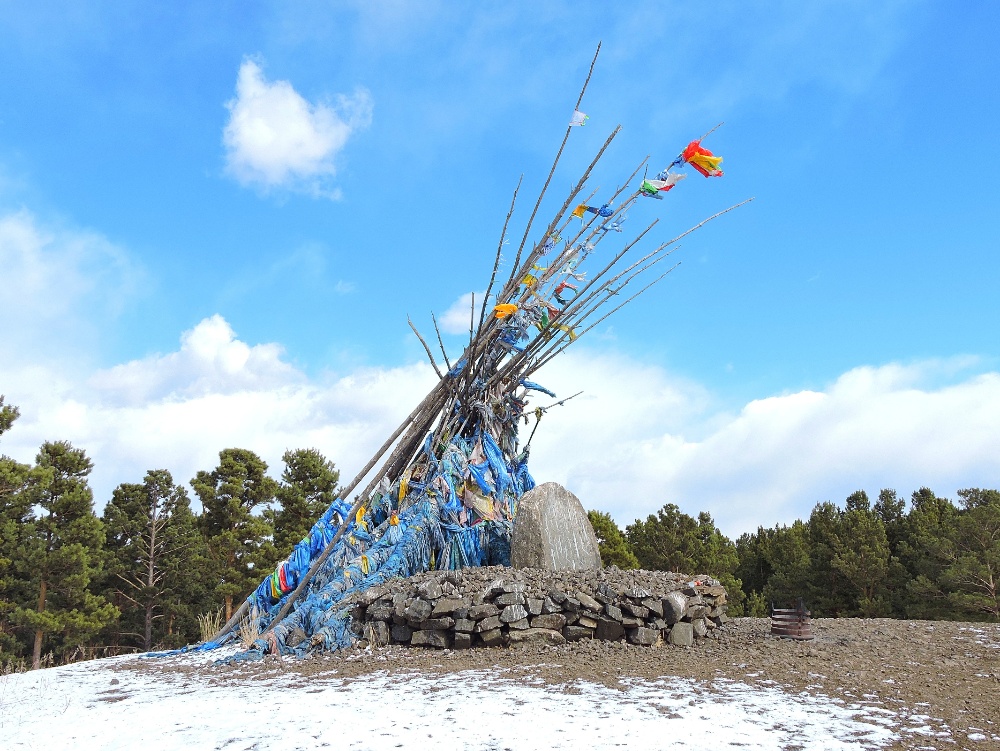
All the while during the two road trips, my attentions were frequently focused on evaluating what the cycling conditions would have been had I been able to tour in Mongolia in the summer, as originally designed. In general, what I saw made me think that I had really missed out. The highways were mostly typical of those often found in semi-arid, or arid, regions, namely with a paved surface that is not always perfectly smooth, and rather narrow without shoulders. However, traffic was almost always quite light, away from UB, that is, and so the cycling would have been reasonable. For the instances when I would have needed to employ dirt roads—which in Mongolia consist entirely of locally-made tracks caused by repeated passage of motorized vehicles over a certain section of the steppe landscape, and which simply get shifted a few meters over to the right or left when the original track becomes too rutted—I concluded that the surfaces would have been reasonable, or at least tolerable, unless I was there during one of the damp times of the year. I was also quite surprised that, for a place with such a low population density, small villages and clusters of businesses with basic food and services, were spaced out at an almost ideal distance from each other, at least in the fairly popular areas where I visited. Additionally, the camping opportunities would have been outstanding. In short, the tour I wanted would have been fantastic! I am still a little aggravated that I wasn’t able to make it happen. Nevertheless, I really enjoyed Mongolia and I am happy that, after all of those years, I was finally able to see it. Even though it is still The Tour That Wasn’t.
Slava Ukraini!!